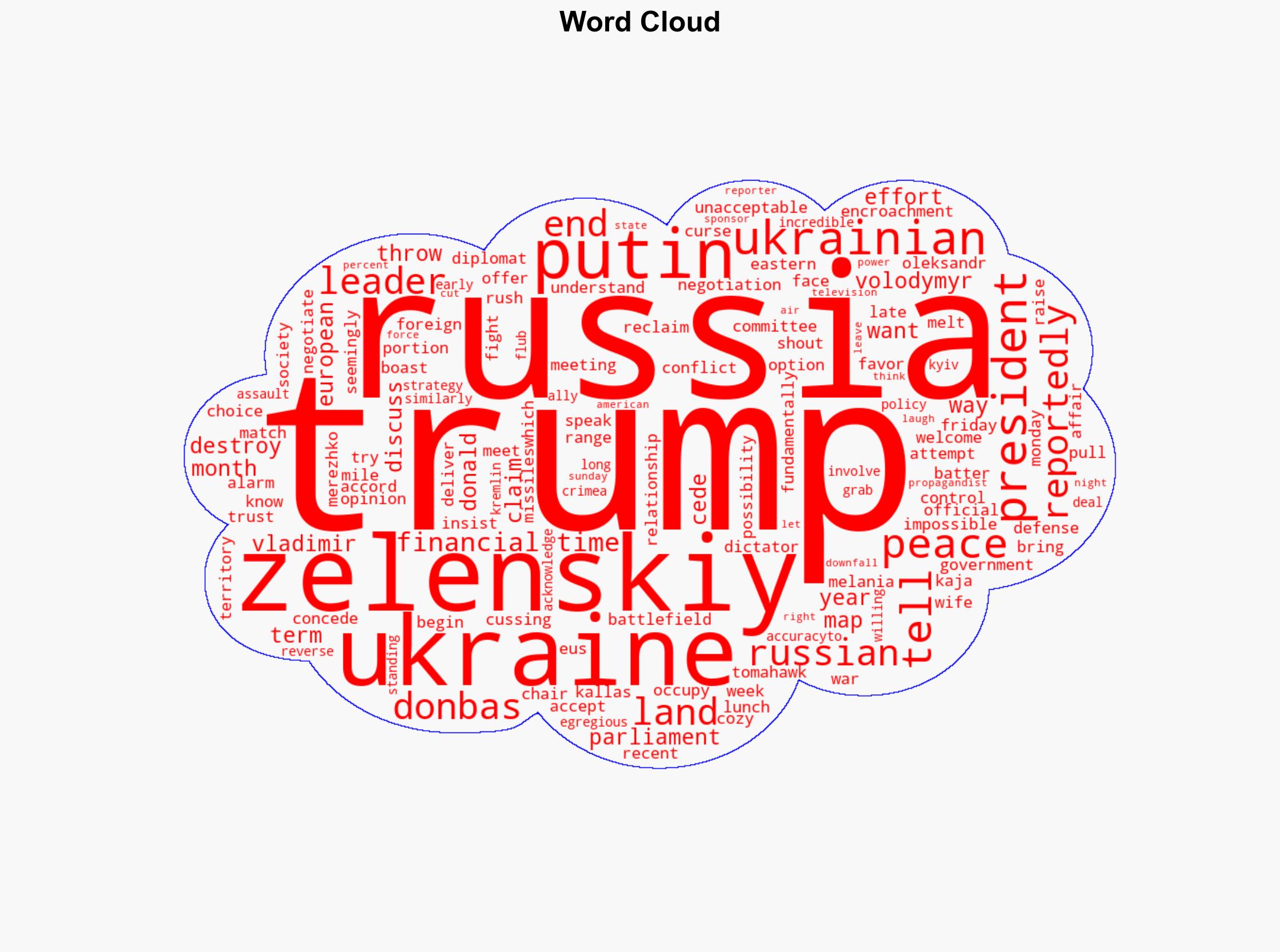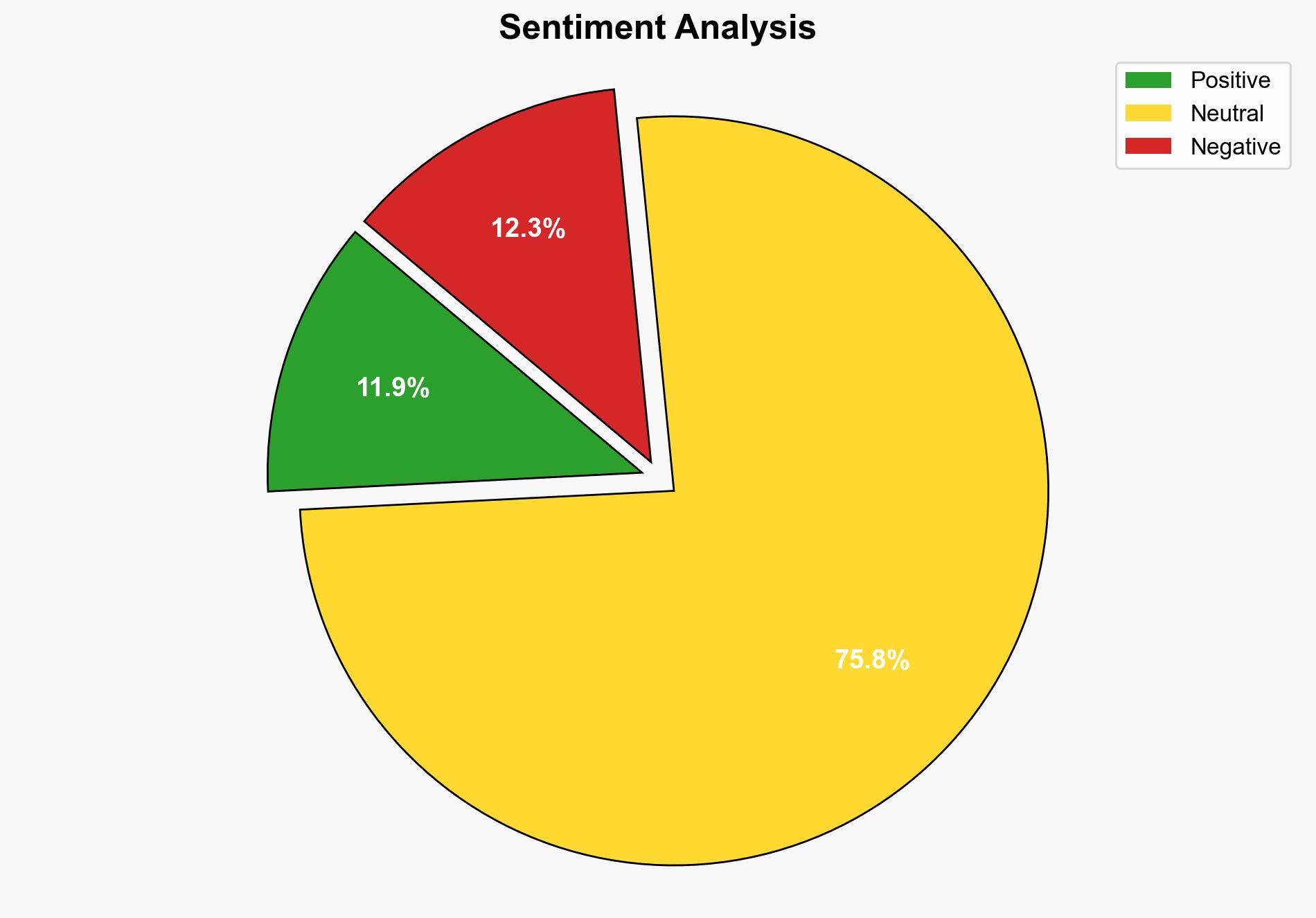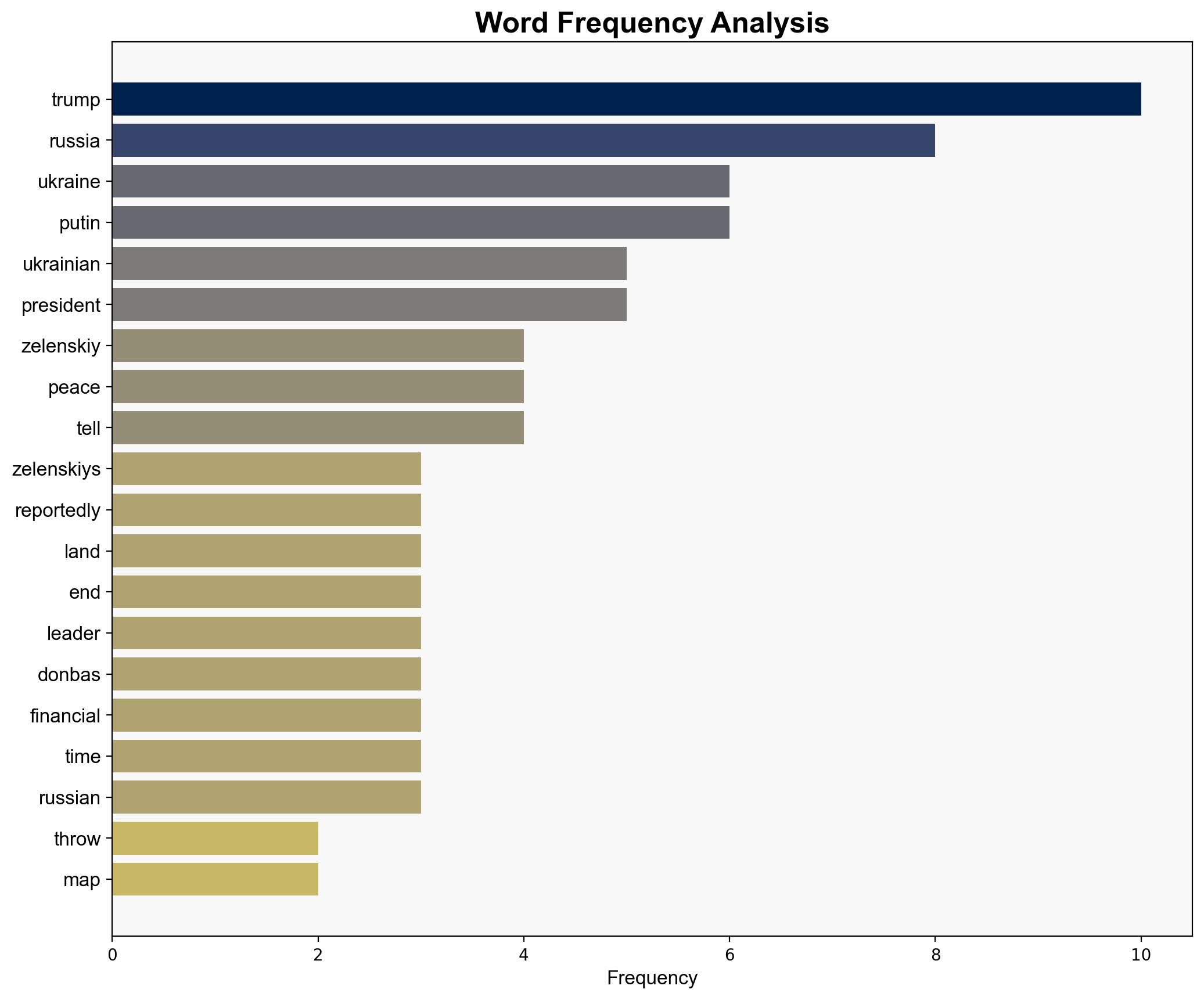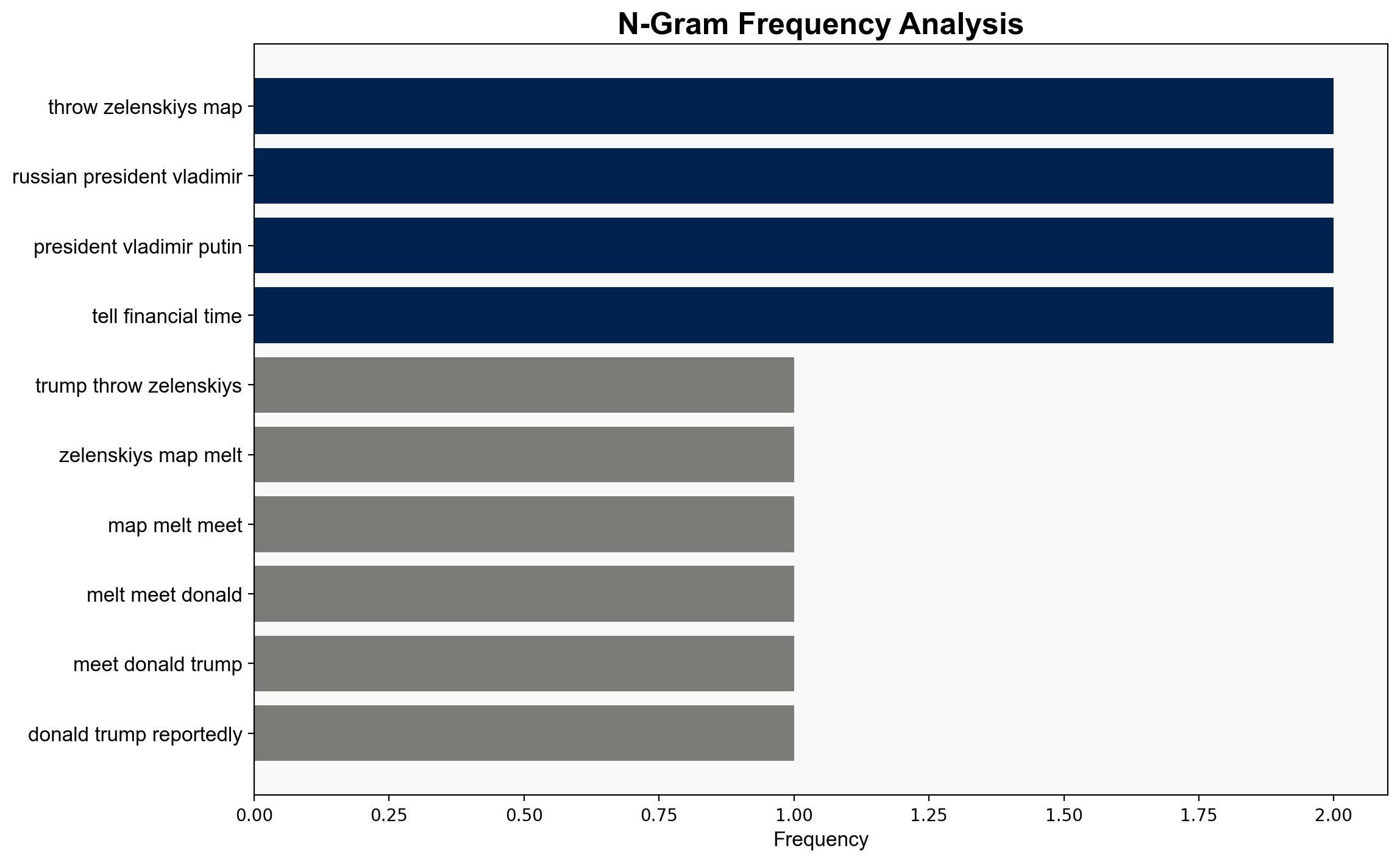Trump Threw Zelenskiys Maps While Melting Down During Their Meeting – The New Republic
Published on: 2025-10-20
Intelligence Report: Trump Threw Zelenskiys Maps While Melting Down During Their Meeting – The New Republic
1. BLUF (Bottom Line Up Front)
The most supported hypothesis suggests that Donald Trump’s actions during the meeting with Volodymyr Zelenskiy reflect an attempt to pressure Ukraine into a peace deal favorable to Russia, potentially undermining Western support for Ukraine. Confidence in this hypothesis is moderate due to the lack of corroborating sources. Recommended action includes reinforcing diplomatic support for Ukraine and monitoring shifts in U.S. foreign policy rhetoric regarding the conflict.
2. Competing Hypotheses
1. **Hypothesis A**: Donald Trump’s behavior was a strategic maneuver to pressure Ukraine into a peace agreement that aligns with Russian interests, possibly to gain favor with Vladimir Putin.
2. **Hypothesis B**: The incident reflects a personal outburst from Trump, driven by frustration over the complexities of the Ukraine-Russia conflict, without any strategic alignment with Russian interests.
Using ACH 2.0, Hypothesis A is more supported due to Trump’s historical statements favoring Russia and the reported context of the meeting. Hypothesis B cannot be entirely dismissed but lacks substantial evidence beyond behavioral interpretation.
3. Key Assumptions and Red Flags
– **Assumptions**: It is assumed that Trump’s actions were deliberate and strategically motivated. Another assumption is that Zelenskiy’s account is accurate and unbiased.
– **Red Flags**: The reliance on a single source (Financial Times) raises concerns about potential bias or incomplete information. The lack of direct quotes from Trump or Zelenskiy is a significant gap.
– **Blind Spots**: Absence of corroborative evidence from other meeting participants or independent observers.
4. Implications and Strategic Risks
– **Geopolitical Risks**: If Hypothesis A is accurate, it could signal a shift in U.S. policy that might weaken NATO’s unified stance against Russian aggression.
– **Psychological Impact**: Zelenskiy’s confidence in Western support could be undermined, affecting Ukrainian morale and strategic decisions.
– **Escalation Scenarios**: A perceived U.S. withdrawal of support could embolden Russian actions in Eastern Europe, increasing regional instability.
5. Recommendations and Outlook
- Strengthen diplomatic communications with Ukraine to reassure continued support and collaboration.
- Monitor U.S. political discourse for shifts in rhetoric regarding the Ukraine conflict.
- Scenario Projections:
- **Best Case**: U.S. clarifies its unwavering support for Ukraine, maintaining NATO cohesion.
- **Worst Case**: Perceived U.S. alignment with Russia leads to a fracturing of Western alliances.
- **Most Likely**: Continued diplomatic tensions with periodic reassurances to Ukraine.
6. Key Individuals and Entities
– Donald Trump
– Volodymyr Zelenskiy
– Vladimir Putin
– Oleksandr Merezhko
– Kaja Kallas
7. Thematic Tags
national security threats, geopolitical strategy, Ukraine-Russia conflict, diplomatic relations




